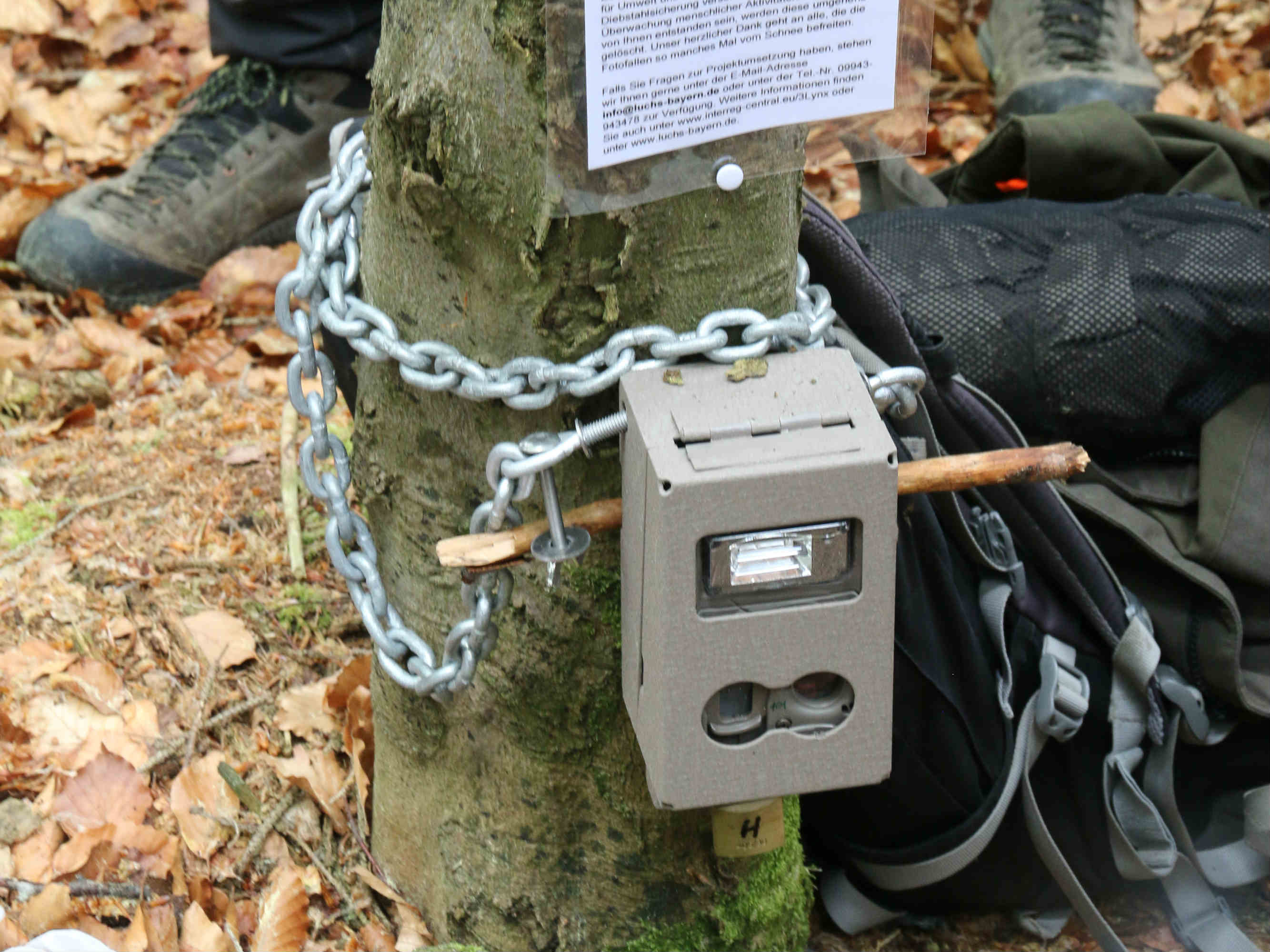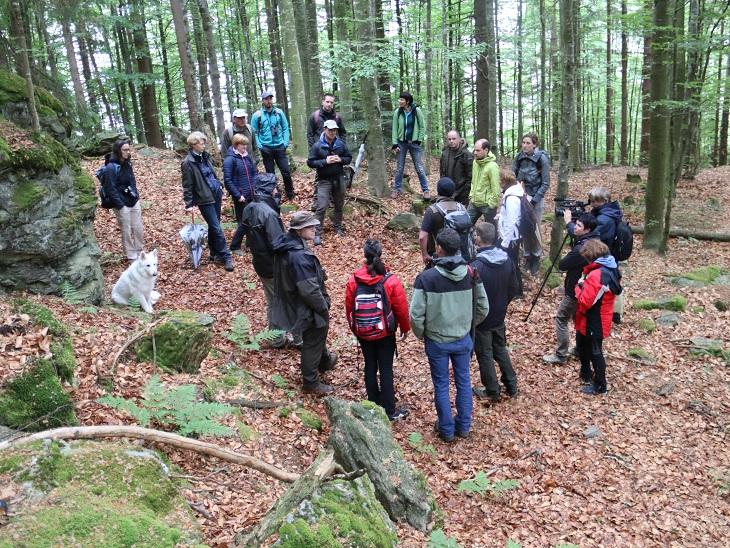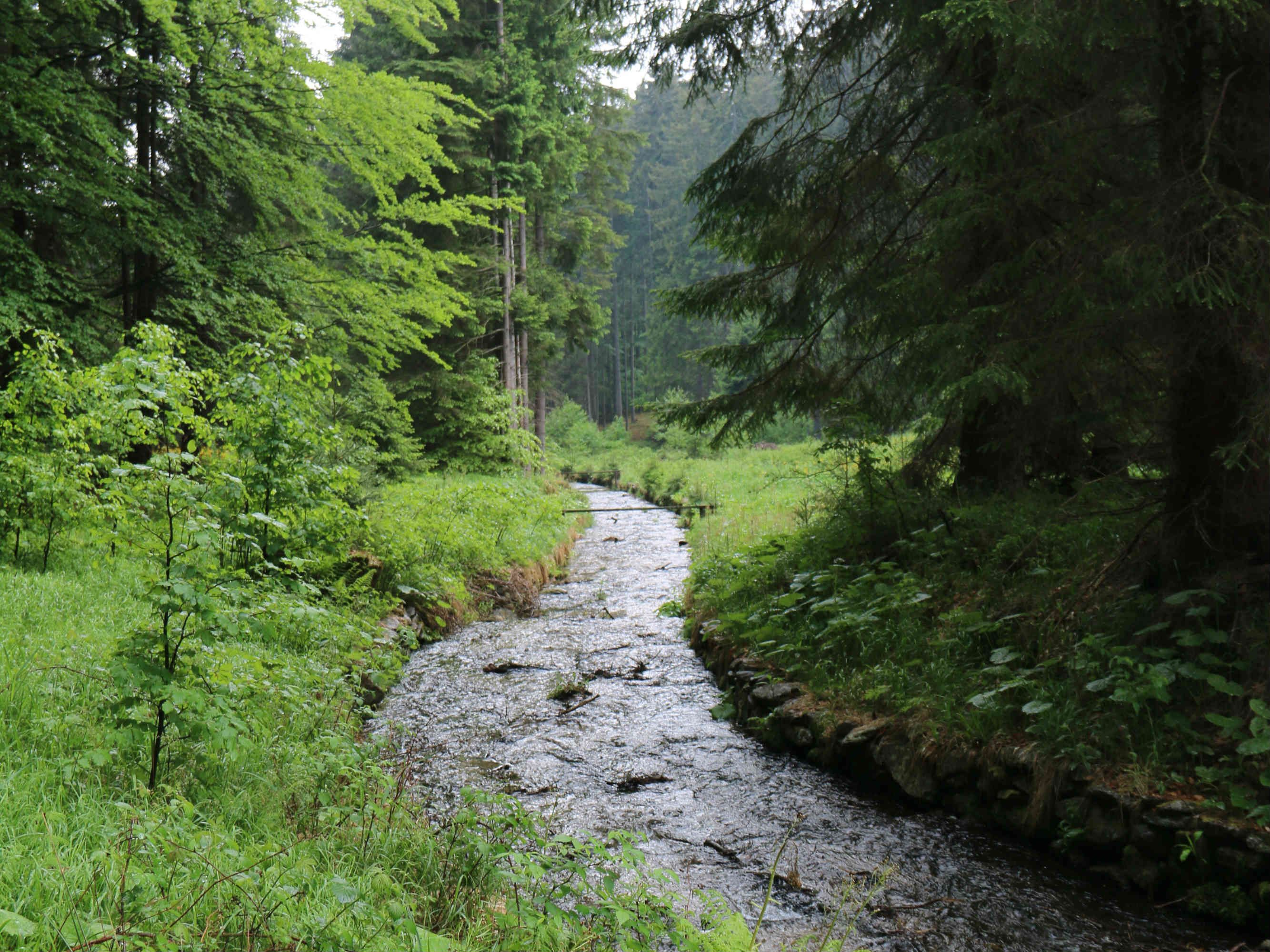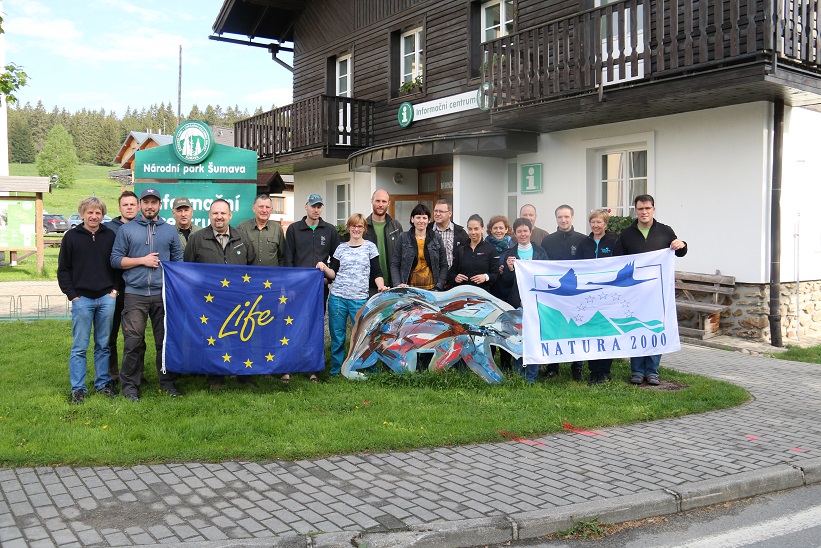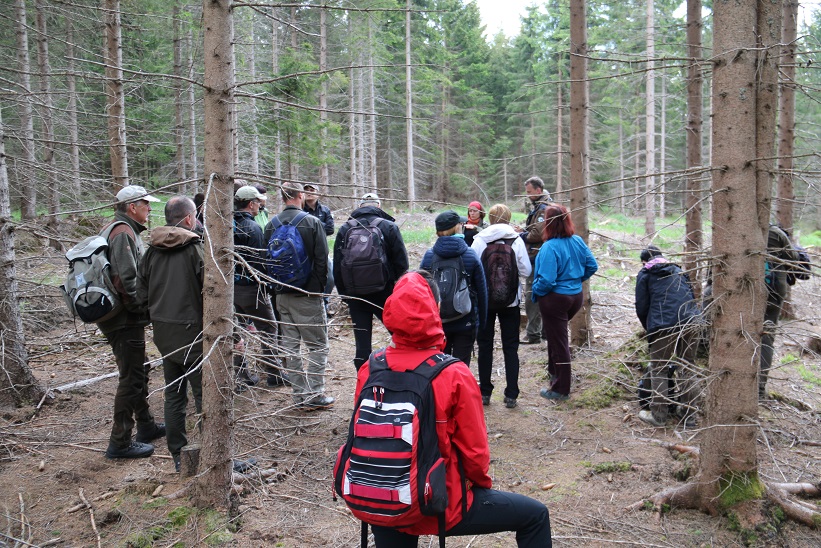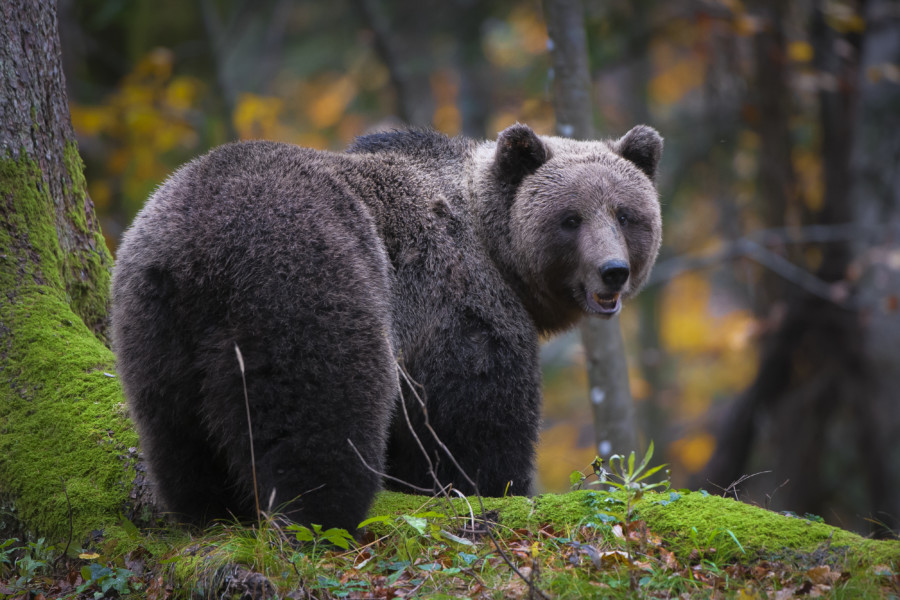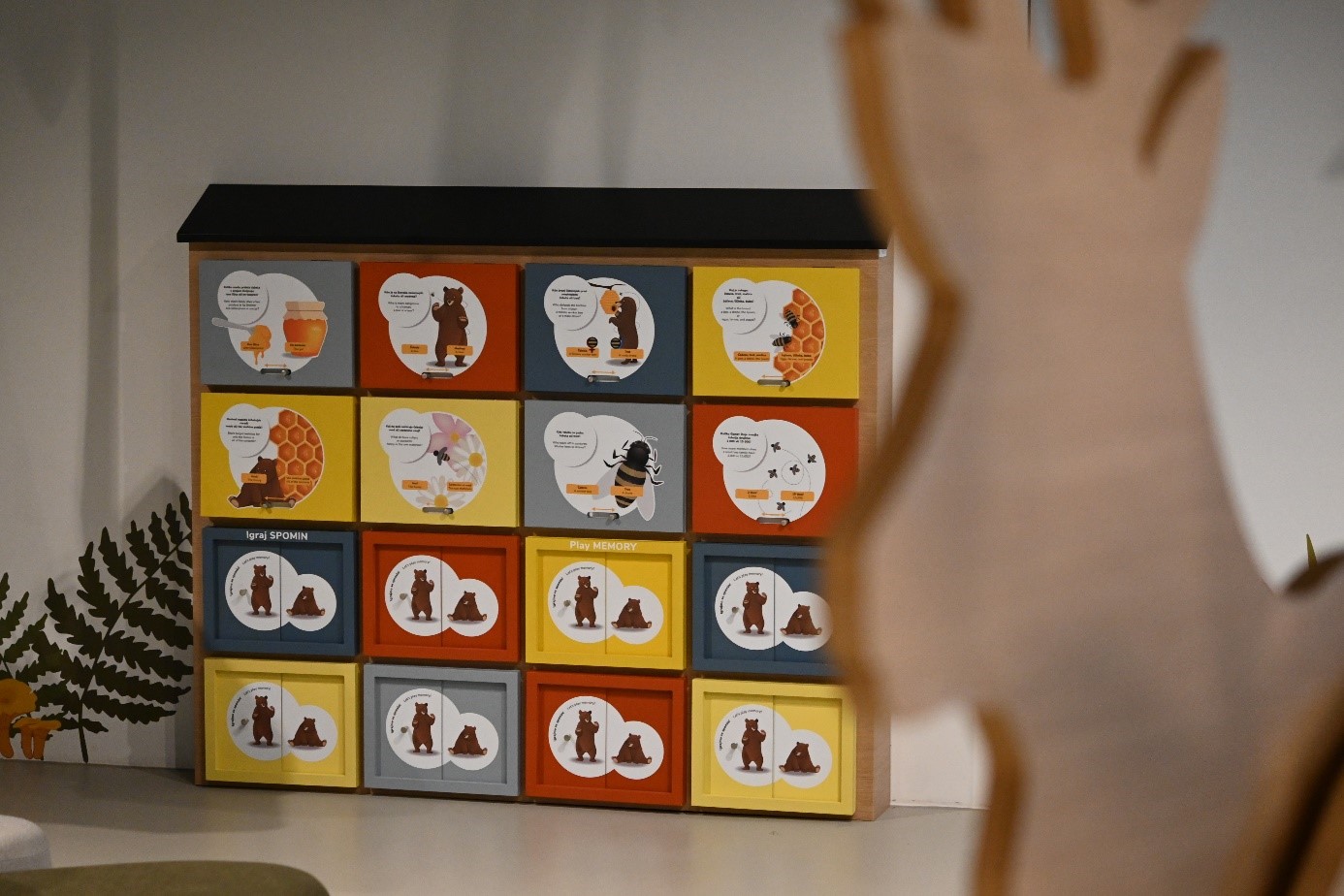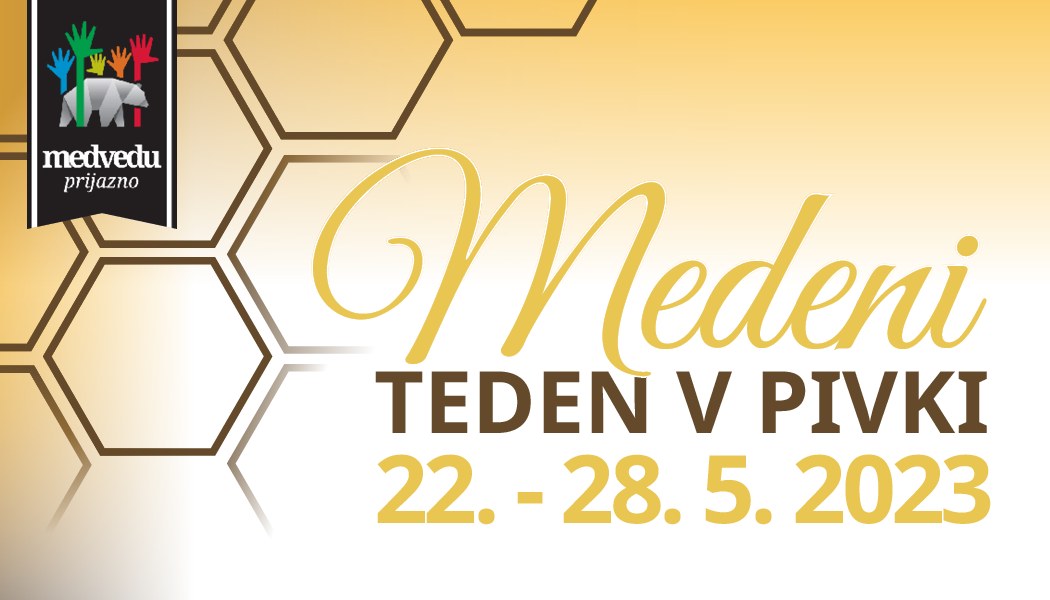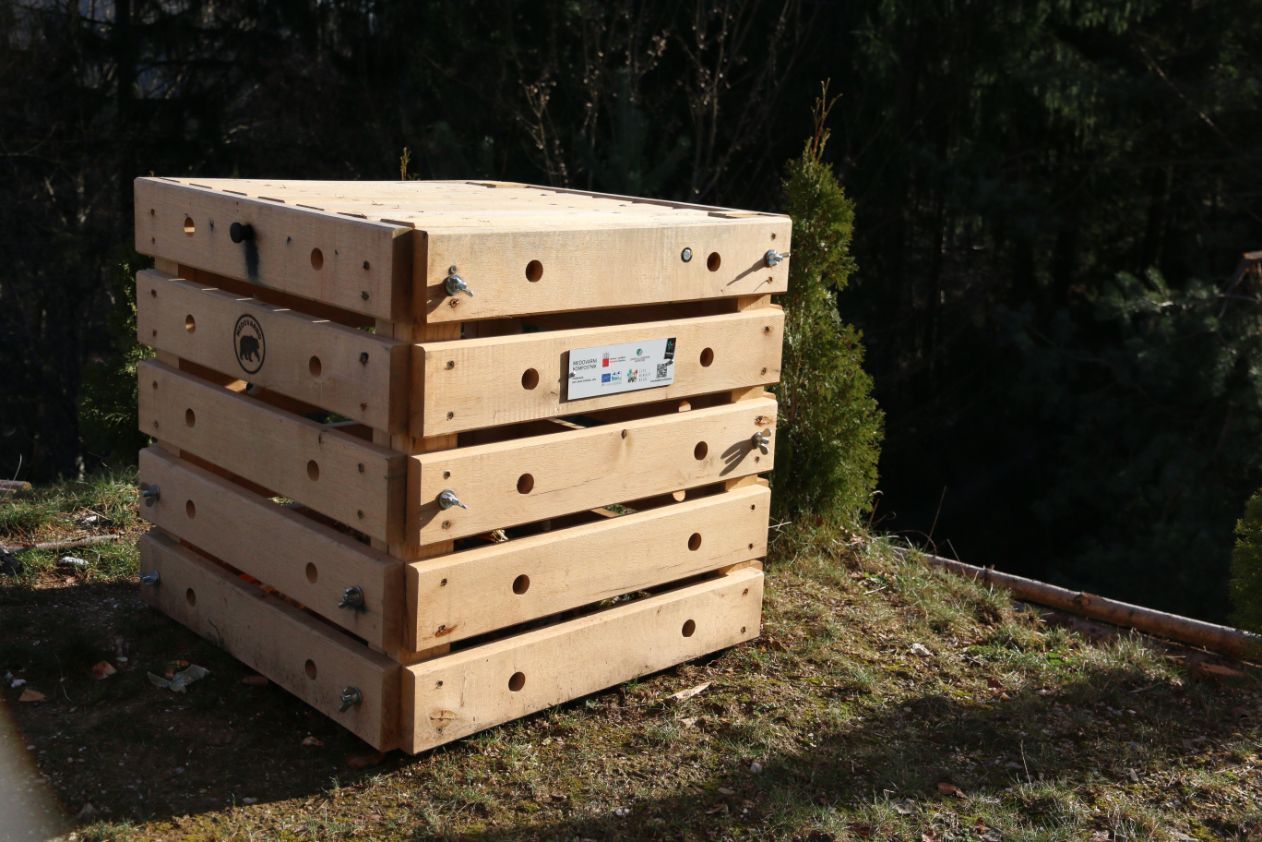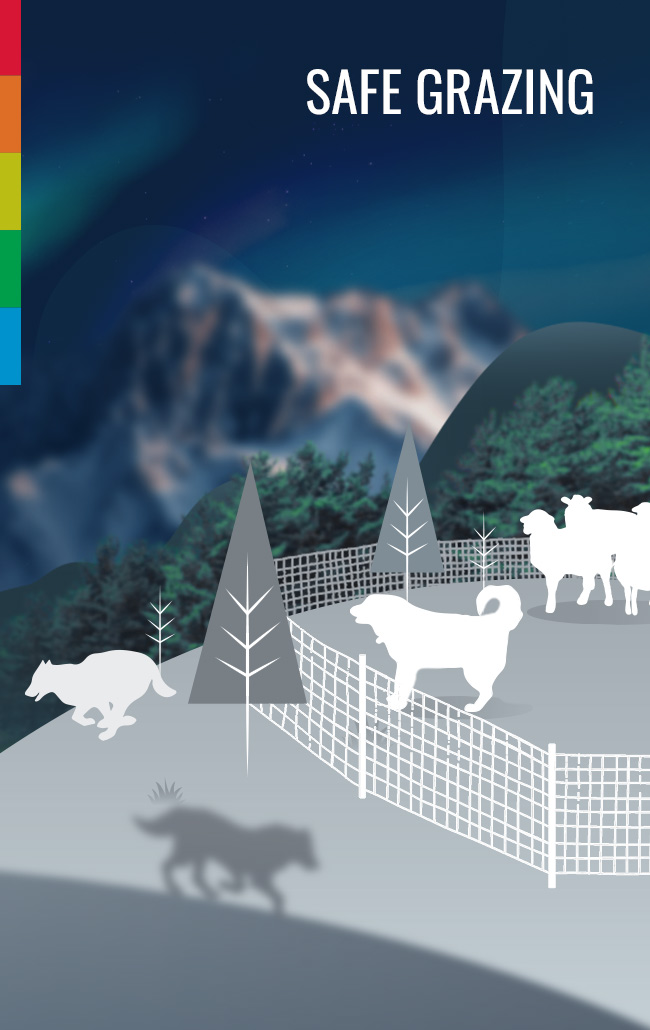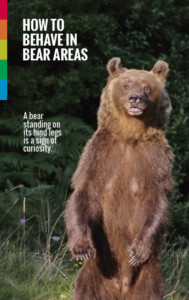Slovenian LIFE DINALP BEAR project team, together with other Slovenian stakeholders in the process of large carnivores conservation and management, visited Šumava National park on excursion from 14th to 18th May 2018. Purpose of this excursion was an international meeting of stakeholders (foresters, hunters, researchers, large carnivore experts, decision-makers, wildlife managers, journalists) from Czech Republic, Austria, Slovenia and Germany, and exchange of experience with living with and managing large carnivores.
In Czech Republic, we were welcomed by the director of Šumava National Park, who presented us the park history, vision and objectives, and described its management strategies. National park foresters took us on a field trip, where they demonstrated examples of different types of forest management – from intensive to natural and virgin forest (forest Boubin).
Apart from field trips, we exchanged our experience in forest- and wildlife management (with special focus on large carnivores) also during lectures and presentations with round table discussions. Hosts from Czech R. presented their long-term experience with lynx monitoring and management. One expert from Montana (USA) presented a process of stakeholders involvement in bear management in Montana.
We visited Austrian stakeholders in Aigen, where a researcher from “Green heart of Europe” presented status of lynx in Austria. Afterwards, we went for a short field trip to a typical lynx habitat in this area.
In Bayerisch Eisenstein (Germany) we met a forester from Bavarian Forest Service, who presented us forest-, wildlife- and large carnivore management in Bavaria. Researchers from WWF Germany demonstrated the setting of a camera trap in the forest and shared their long-term experience in large carnivores monitoring. We finished our excursion with a visit to large carnivores enclosures in Zwiesel.
Attendees of the excursion were very pleased with the exchange of experience and best practice of coexistence with large carnivores. This excursion was also a great opportunity for networking and contributed to new insights that will help adjusting management approaches and promoting coexistence with large carnivores.



